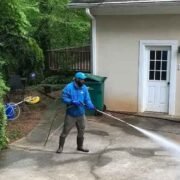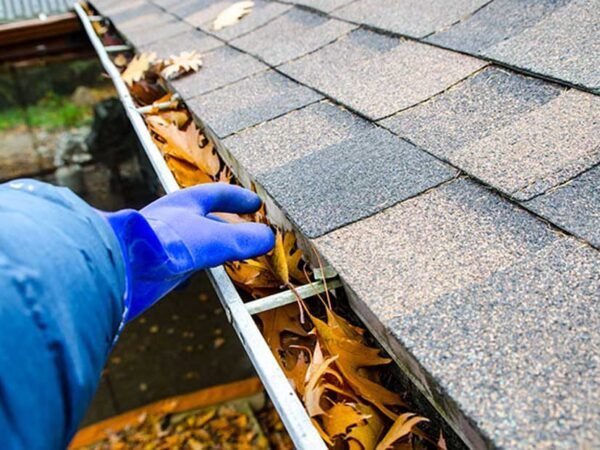Getting a flawless paint finish isn’t just about the right colour or brand of paint — it’s about preparation. The real work happens before the roller hits the wall. Professional interior home painters know that careful prep work saves time, prevents costly touch-ups, and makes every coat of paint look smoother and last longer.
If you’ve ever wondered what actually happens between “we’re starting today” and the first brushstroke, here’s a look behind the curtain — the full prep process, step by step.
Step 1: Assessing the Room and Planning the Job
Before a single tool comes out, pros walk through the space and take note of every detail. They check for wall damage, trim type, previous coatings, moisture spots, and lighting conditions. This helps determine the right primer, finish, and paint type — especially in areas like kitchens, bathrooms, or basements where humidity and lighting differ.
For homeowners, this is also the time to confirm colour choices in real light conditions. A paint swatch that looks perfect in the store can appear completely different under your living room lamps.
Step 2: Clearing and Protecting the Space
Professionals treat your space like a worksite. Furniture is moved to the centre or taken out of the room entirely, then covered with clean drop cloths or plastic sheeting. Floors get extra protection — either with rosin paper taped down or canvas tarps that won’t slip.
Outlet covers, light fixtures, and hardware are removed to prevent paint splatter. These little steps save hours of cleaning and ensure clean, crisp lines around every edge.
Step 3: Cleaning Walls and Surfaces
Even spotless homes have invisible buildup — oils from hands, cooking residue, or dust that prevents paint from sticking properly. Painters clean walls using mild detergents or trisodium phosphate (TSP) solutions, then rinse and let them dry fully.
Skipping this step can cause bubbling, uneven coverage, and peeling later on. Clean surfaces are the foundation of a durable paint job.
Step 4: Repairing Imperfections
No wall is perfect. Professionals take the time to fix dents, holes, cracks, and nail pops with spackle or joint compound. Once filled, these areas are sanded smooth using fine-grit sandpaper and checked under bright light for missed spots.
Corners and baseboards often get a thin line of caulk to seal gaps, preventing future cracking and making trim look like part of the wall.
If there’s significant damage, like water stains or old wallpaper residue, extra priming or drywall patching may be needed before moving forward.
Step 5: Sanding for a Uniform Surface
Sanding isn’t glamorous, but it’s critical. A light sanding removes gloss from old paint and levels minor imperfections. This ensures the new coat adheres properly and looks even across the room.
Pros use pole sanders or power sanders with dust extraction systems to keep the workspace clean. Once complete, walls are wiped down with a tack cloth or microfiber pad to remove any leftover dust.
Step 6: Priming the Walls
Primer does more than help paint stick — it evens out the surface colour, seals repairs, and boosts the final coat’s vibrancy. Depending on the wall’s condition, painters may use different types: stain-blocking primers for problem areas, high-build primers for rough surfaces, or bonding primers for glossy finishes.
Skipping primer might seem like a shortcut, but it often means needing extra coats of paint to achieve full coverage — costing more time and money in the long run.
You can learn more about paint and primer differences through resources like Benjamin Moore’s painting guides.
Step 7: Taping and Edge Protection
Before the first brush stroke, painters tape off edges, trim, window frames, and door casings with professional-grade painter’s tape. They also score the tape edges for cleaner lines, preventing paint bleed.
For areas that need sharp, straight transitions — like between walls and ceilings — taping is what separates a “good enough” paint job from a professional one.
Pros may also create custom shields using plastic or cardboard to protect tricky corners and fixtures from overspray or splatter.
Step 8: Managing Temperature and Ventilation
The room environment can make or break a paint job. Professionals monitor temperature and humidity closely — paint applied in overly humid or cold conditions won’t cure properly.
They’ll open windows for airflow or use fans and dehumidifiers if needed. Balanced ventilation also reduces odours from primers or paints, especially in enclosed rooms.
For homeowners, this is a good time to step away for a few hours while the space dries and ventilates.
Step 9: Setting Up Tools and Mixing Paint
Before painting, the crew sets up stations: rollers, brushes, extension poles, paint trays, and drop buckets. Each tool is specific — angled brushes for cutting edges, rollers for large walls, and mini rollers for corners and small sections.
Paint is stirred thoroughly and sometimes strained to remove clumps. If multiple cans are being used, they’re mixed together (a process called “boxing”) to ensure colour consistency across the entire room.
Step 10: The Final Pre-Paint Inspection
Once the prep work is complete, professionals do a final walkthrough under natural and artificial light. They look for missed spots, sanding dust, or any uneven patches. Only when every surface is perfect does the painting begin.
This inspection guarantees that the finished look — no matter the colour or sheen — is flawless, long-lasting, and ready to transform the space.
Bringing It All Together
Proper preparation isn’t glamorous, but it’s what makes a professional paint job stand out. Every step — from cleaning and sanding to priming and protecting — plays a role in how the final colour looks and how long it lasts.
Homeowners who understand the process not only appreciate the effort behind the work but can also spot quality when they see it. Whether you’re hiring pros or taking on a smaller project yourself, following these preparation steps means smoother results, less stress, and a finish that holds up beautifully over time.
For more expert insights on paint types, prep methods, and maintenance, check out trusted resources like The Paint Quality Institute or Canadian Home Builders’ Association













